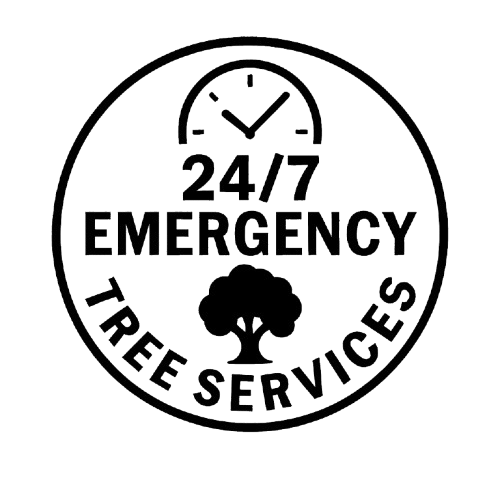Silver Oaks, Red Oaks, Sycamores, and Bald Cypress
Silver Maple trees are popular in urban and suburban landscapes due to their fast growth and attractive appearance. However, these trees have specific challenges, particularly their weak wood structure and shallow root systems. Silver maples can become dangerous in storm damage or illness, necessitating emergency tree removal to stop property damage or personal injury. Professional services are essential to handle these situations swiftly and safely, guarantee adequate clearance, and reduce threats to surrounding individuals and structures. Key Takeaways: Weak Structure and Shallow Roots: Silver Maples tend to develop weak branches and shallow roots, which can damage them during storms or when infected by diseases. When these trees become structurally unstable, emergency removal is often required. Professional Services for Safe Removal: Emergency tree removal services securely remove Silver Maples without damaging neighboring properties. They use specialized tools and techniques, and their expertise is critical for assessing the tree’s condition and executing a safe removal plan. Fast Response Time is Essential: Quick action prevents accidents and further property damage in emergencies. Hiring a professional service with a rapid response time ensures that the hazardous tree is removed before it becomes a more significant threat. Importance of Tree Care in Urban Areas Urban trees play a crucial role in improving the quality of life in cities. They provide many benefits, from enhancing air quality by filtering pollutants to cooling the urban environment through shade and transpiration. Additionally, trees raise home values and foster general well-being by enhancing local aesthetics. However, maintaining healthy trees in urban areas presents unique challenges. Pollution, limited root space, compacted soil, and competition for sunlight are common issues that can hinder tree growth. Careful care and maintenance are needed to solve these issues and maintain trees’ vital role in urban life. Overview of Red Oaks, Sycamores, and Bald Cypress in Urban Settings Red Oaks, Sycamores, and Bald Cypress are commonly planted in urban areas for their resilience and aesthetic qualities. Each species offers specific characteristics that make them suitable for city environments. Red Oaks are known for their strong wood, vibrant red autumn foliage, and adaptability to different soil types. They can withstand pollution and thrive in urban settings where air quality may be lower, making them a popular choice for street planting and parks. Sycamores’ distinctive peeling bark and broad, spreading crowns are easily recognizable. They are often chosen for urban planting because they tolerate poor soil and compacted spaces. Their large size and canopy provide excellent shade, making them ideal for large open spaces like city parks. The Bald Cypress stands out for its unique, feathery foliage and ability to grow well in wet and dry conditions. Despite being a conifer, it sheds its needles in the fall, adding seasonal interest to urban landscapes. It is a flexible choice for city planting because it tolerates various soil types, including those with inadequate drainage. These species are favored in urban areas because they offer aesthetic appeal and demonstrate resilience to environmental stresses commonly found in cities. Their characteristics, including solid growth habits and tolerance to pollution, make them reliable choices for urban greenery. Common Issues with Red Oaks, Sycamores, and Bald Cypress in Urban Areas Urban environments present various challenges for trees, and Red Oaks, Sycamores, and Bald Cypress are no exception. Each species faces specific issues requiring regular care and management to ensure their health and prevent damage to surrounding infrastructure. Red Oaks Soil Compaction and Limited Root Space: In urban areas, heavy foot traffic and construction often result in compacted soil, which restricts the ability of Red Oaks to develop deep and healthy root systems. This can lead to poor water and nutrient absorption, impacting the tree’s health. Vulnerability to Oak Wilt Disease: Oak wilt is a severe fungal disease that affects Red Oaks. If not treated, it causes wilting leaves, crown dieback, and eventual death. In dense urban settings, the spread of oak wilt can be rapid, making prevention and early intervention critical. Pruning to Maintain Structure and Prevent Damage: Red Oaks require regular pruning to maintain a strong structure, mainly in urban areas with little space. Pruning trees properly lowers the chance of damaging surrounding structures, cars, or pedestrians during storms and helps minimize limb breakage. Sycamores Susceptibility to Anthracnose and Other Fungal Diseases: Sycamores are prone to anthracnose, a fungal disease that causes leaf blight, twig dieback, and defoliation. Infected trees may lose significant amounts of foliage, impacting their aesthetic value and overall health. Issues with Large Root Systems Damaging Urban Infrastructure: Sycamores’ expansive root systems can significantly damage urban infrastructure, such as sidewalks, driveways, and underground pipes. This makes them more challenging to manage in densely built environments. Shedding Bark and Its Impact on the Urban Environment: Sycamores naturally shed their bark in large flakes, which can create additional maintenance issues in urban settings. The bark litter can clutter streets, sidewalks, and public spaces, requiring frequent cleanup. Sycamore Issues Impact on Urban Areas Anthracnose (fungal disease) It causes defoliation and reduces tree health and aesthetic value. Large root systems Damage to sidewalks, driveways, and underground infrastructure. Shedding bark Creates litter, increasing the need for regular cleanup. Bald Cypress Potential for Root Conflicts with Sidewalks and Sewers: Although Bald Cypress trees are typically tolerant of urban conditions, their roots can sometimes grow into nearby sewer systems or lift sidewalks, causing damage. This is particularly common in areas with poorly managed drainage or compacted soil. Need for Adequate Moisture in Drier Urban Areas: Bald Cypress trees thrive in moist environments. However, urban areas with limited water access or poor irrigation systems can stress the tree, leading to poor growth and potential root damage. They may require supplemental watering in dry urban settings. Leaf Drop in Fall and Its Effect on Urban Maintenance: Bald Cypress trees, unlike many conifers, lose their needles in the fall. This can lead to maintenance problems, including leaf litter buildup in sidewalks, drains, and roadways, increasing the need for cleanup and management in urban landscapes. Bald Cypress Issues Impact




